सरयूपारीण ब्राह्मण या सरवरिया ब्राह्मण या सरयूपारी ब्राह्मण सरयू नदी के पूर्वी तरफ बसे हुए ब्राह्मणों को कहा जाता है। यह कान्यकुब्ज ब्राह्मणो कि शाखा है। श्रीराम ने लंका विजय के बाद कान्यकुब्ज ब्राह्मणों से यज्ञ करवाकर उन्हे सरयु पार स्थापित किया था। सरयु नदी को सरवार भी कहते थे। ईसी से ये ब्राह्मण सरयुपारी ब्राह्मण कहलाते हैं। सरयुपारी ब्राह्मण पूर्वी उत्तरप्रदेश, उत्तरी मध्यप्रदेश, बिहार छत्तीसगढ़ और झारखण्ड में भी होते हैं। मुख्य सरवार क्षेत्र पश्चिम मे उत्तर प्रदेश राज्य के अयोध्या शहर से लेकर पुर्व मे बिहार के छपरा तक तथा उत्तर मे सौनौली से लेकर दक्षिण मे मध्यप्रदेश के रींवा शहर तक है। काशी, प्रयाग, रीवा, बस्ती, गोरखपुर, अयोध्या, छपरा इत्यादि नगर सरवार भूखण्ड में हैं।
एक अन्य मत के अनुसार श्री राम ने कान्यकुब्जो को सरयु पार नहीं बसाया था बल्कि रावण जो की ब्राह्मण थे उनकी हत्या करने पर ब्रह्म हत्या के पाप से मुक्त होने के लिए जब श्री राम ने भोजन ओर दान के लिए ब्राह्मणों को आमंत्रित किया तो जो ब्राह्मण स्नान करने के बहाने से सरयू नदी पार करके उस पार चले गए ओर भोजन तथा दान समंग्री ग्रहण नहीं की वे ब्राह्मण सरयुपारीन ब्राह्मण कहे गए।
सरयूपारीण ब्राहमणों के मुख्य गाँव :
गर्ग (शुक्ल- वंश)
गर्ग ऋषि के तेरह लडके बताये जाते है जिन्हें गर्ग गोत्रीय, पंच प्रवरीय, शुक्ल बंशज कहा जाता है जो तेरह गांवों में बिभक्त हों गये थे| गांवों के नाम कुछ इस प्रकार है|
(१) मामखोर (२) खखाइज खोर (३) भेंडी (४) बकरूआं (५) अकोलियाँ (६) भरवलियाँ (७) कनइल (८) मोढीफेकरा (९) मल्हीयन (१०) महसों (११) महुलियार (१२) बुद्धहट (१३) इसमे चार गाँव का नाम आता है लखनौरा, मुंजीयड, भांदी, और नौवागाँव| ये सारे गाँव लगभग गोरखपुर, देवरियां और बस्ती में आज भी पाए जाते हैं।
उपगर्ग (शुक्ल-वंश):
उपगर्ग के छ: गाँव जो गर्ग ऋषि के अनुकरणीय थे कुछ इस प्रकार से हैं|
(१)बरवां (२) चांदां (३) पिछौरां (४) कड़जहीं (५) सेदापार (६) दिक्षापार
यही मूलत: गाँव है जहाँ से शुक्ल बंश का उदय माना जाता है यहीं से लोग अन्यत्र भी जाकर शुक्ल बंश का उत्थान कर रहें हैं यें सभी सरयूपारीण ब्राह्मण हैं।
गौतम (मिश्र-वंश):
गौतम ऋषि के छ: पुत्र बताये जातें हैं जो इन छ: गांवों के वाशी थे|
(१) चंचाई (२) मधुबनी (३) चंपा (४) चंपारण (५) विडरा (६) भटीयारी
इन्ही छ: गांवों से गौतम गोत्रीय, त्रिप्रवरीय मिश्र वंश का उदय हुआ है, यहीं से अन्यत्र भी पलायन हुआ है ये सभी सरयूपारीण ब्राह्मण हैं।
उप गौतम (मिश्र-वंश):
उप गौतम यानि गौतम के अनुकारक छ: गाँव इस प्रकार से हैं|
(१) कालीडीहा (२) बहुडीह (३) वालेडीहा (४) भभयां (५) पतनाड़े (६) कपीसा
इन गांवों से उप गौतम की उत्पत्ति मानी जाति है।
वत्स गोत्र (मिश्र- वंश):
🔸🔸🔹🔹🔸🔸
वत्स ऋषि के नौ पुत्र माने जाते हैं जो इन नौ गांवों में निवास करते थे|
(१) गाना (२) पयासी (३) हरियैया (४) नगहरा (५) अघइला (६) सेखुई (७) पीडहरा (८) राढ़ी (९) मकहडा
बताया जाता है की इनके वहा पांति का प्रचलन था अतएव इनको तीन के समकक्ष माना जाता है।
कौशिक गोत्र (मिश्र-वंश):
🔸🔸🔹🔸🔹🔸🔸
तीन गांवों से इनकी उत्पत्ति बताई जाती है जो निम्न है।
(१) धर्मपुरा (२) सोगावरी (३) देशी
वशिष्ठ गोत्र (मिश्र-वंश):
🔸🔸🔹🔹🔸🔸
इनका निवास भी इन तीन गांवों में बताई जाती है।
(१) बट्टूपुर मार्जनी (२) बढ़निया (३) खउसी
शांडिल्य गोत्र ( तिवारी,त्रिपाठी वंश)
शांडिल्य ऋषि के बारह पुत्र बताये जाते हैं जो इन बाह गांवों से प्रभुत्व रखते हैं।
(१) सांडी (२) सोहगौरा (३) संरयाँ (४) श्रीजन (५) धतूरा (६) भगराइच (७) बलूआ (८) हरदी (९) झूडीयाँ (१०) उनवलियाँ (११) लोनापार (१२) कटियारी, लोनापार में लोनाखार, कानापार, छपरा भी समाहित है।
इन्ही बारह गांवों से आज चारों तरफ इनका विकास हुआ है, यें सरयूपारीण ब्राह्मण हैं। इनका गोत्र श्री मुख शांडिल्य त्रि प्रवर है, श्री मुख शांडिल्य में घरानों का प्रचलन है जिसमे राम घराना, कृष्ण घराना, नाथ घराना, मणी घराना है, इन चारों का उदय, सोहगौरा गोरखपुर से है जहाँ आज भी इन चारों का अस्तित्व कायम है।
उप शांडिल्य ( तिवारी- त्रिपाठी, वंश):
🔸🔸🔹🔸🔸🔹🔸🔸🔹🔸🔸
इनके छ: गाँव बताये जाते हैं जी निम्नवत हैं।
(१) शीशवाँ (२) चौरीहाँ (३) चनरवटा (४) जोजिया (५) ढकरा (६) क़जरवटा
भार्गव गोत्र (तिवारी या त्रिपाठी वंश):
भार्गव ऋषि के चार पुत्र बताये जाते हैं जिसमें चार गांवों का उल्लेख मिलता है|
(१) सिंघनजोड़ी (२) सोताचक (३) चेतियाँ (४) मदनपुर।
भारद्वाज गोत्र (दुबे वंश):
🔸🔸🔹🔸🔹🔸🔸
भारद्वाज ऋषि के चार पुत्र बाये जाते हैं जिनकी उत्पत्ति इन चार गांवों से बताई जाती है|
(१) बड़गईयाँ (२) सरार (३) परहूँआ (४) गरयापार
कन्चनियाँ और लाठीयारी इन दो गांवों में दुबे घराना बताया जाता है जो वास्तव में गौतम मिश्र हैं लेकिन इनके पिता क्रमश: उठातमनी और शंखमनी गौतम मिश्र थे परन्तु वासी (बस्ती) के राजा बोधमल ने एक पोखरा खुदवाया जिसमे लट्ठा न चल पाया, राजा के कहने पर दोनों भाई मिल कर लट्ठे को चलाया जिसमे एक ने लट्ठे सोने वाला भाग पकड़ा तो दुसरें ने लाठी वाला भाग पकड़ा जिसमे कन्चनियाँ व लाठियारी का नाम पड़ा, दुबे की गादी होने से ये लोग दुबे कहलाने लगें। सरार के दुबे के वहां पांति का प्रचलन रहा है अतएव इनको तीन के समकक्ष माना जाता है।
सावरण गोत्र ( पाण्डेय वंश)
🔸🔸🔹🔸🔸🔹🔸🔸
सावरण ऋषि के तीन पुत्र बताये जाते हैं इनके वहां भी पांति का प्रचलन रहा है जिन्हें तीन के समकक्ष माना जाता है जिनके तीन गाँव निम्न हैं|
(१) इन्द्रपुर (२) दिलीपपुर (३) रकहट (चमरूपट्टी)
सांकेत गोत्र (मलांव के पाण्डेय वंश)
🔸🔸🔹🔸🔸🔹🔸🔸🔹🔸🔸
सांकेत ऋषि के तीन पुत्र इन तीन गांवों से सम्बन्धित बाते जाते हैं|
(१) मलांव (२) नचइयाँ (३) चकसनियाँ
कश्यप गोत्र (त्रिफला के पाण्डेय वंश)
🔸🔸🔹🔸🔸🔹🔸🔸🔹🔸🔸
इन तीन गांवों से बताये जाते हैं।
(१) त्रिफला (२) मढ़रियाँ (३) ढडमढीयाँ
ओझा वंश
🔸🔹🔸
इन तीन गांवों से बताये जाते हैं।
(१) करइली (२) खैरी (३) निपनियां
चौबे -चतुर्वेदी, वंश (कश्यप गोत्र)
🔸🔸🔹🔸🔹🔸🔹🔸🔸
इनके लिए तीन गांवों का उल्लेख मिलता है।
(१) वंदनडीह (२) बलूआ (३) बेलउजां
एक गाँव कुसहाँ का उल्लेख बताते है जो शायद उपाध्याय वंश का मालूम पड़ता है।
ब्राह्मणों की वंशावली
🔸🔸🔹🔹🔸🔸
भविष्य पुराण के अनुसार ब्राह्मणों का इतिहास है की प्राचीन काल में महर्षि कश्यप के पुत्र कण्वय की आर्यावनी नाम की देव कन्या पत्नी हुई। ब्रम्हा की आज्ञा से दोनों कुरुक्षेत्र वासनी
सरस्वती नदी के तट पर गये और कण् व चतुर्वेदमय सूक्तों में सरस्वती देवी की स्तुति करने लगे एक वर्ष बीत जाने पर वह देवी प्रसन्न हो वहां आयीं और ब्राम्हणो की समृद्धि के लिये उन्हें
वरदान दिया। वर के प्रभाव कण्वय के आर्य बुद्धिवाले दस पुत्र हुए जिनका क्रमानुसार नाम था👉
उपाध्याय,
दीक्षित,
पाठक,
शुक्ला,
मिश्रा,
अग्निहोत्री,
दुबे,
तिवारी,
पाण्डेय,
और
चतुर्वेदी।
इन लोगो का जैसा नाम था वैसा ही गुण। इन लोगो ने नत मस्तक हो सरस्वती देवी को प्रसन्न किया। बारह वर्ष की अवस्था वाले उन लोगो को भक्तवत्सला शारदा देवी ने अपनी कन्याए प्रदान की।
वे क्रमशः
उपाध्यायी,
दीक्षिता,
पाठकी,
शुक्लिका,
मिश्राणी,
अग्निहोत्रिधी,
द्विवेदिनी,
तिवेदिनी
पाण्ड्यायनी,
और
चतुर्वेदिनी कहलायीं।
फिर उन कन्याआं के भी अपने-अपने पति से सोलह-सोलह पुत्र हुए हैं वे सब गोत्रकार हुए जिनका नाम –
कष्यप,
भरद्वाज,
विश्वामित्र,
गौतम,
जमदग्रि,
वसिष्ठ,
वत्स,
गौतम,
पराशर,
गर्ग,
अत्रि,
भृगडत्र,
अंगिरा,
श्रंगी,
कात्याय,
और
याज्ञवल्क्य।
इन नामो से सोलह-सोलह पुत्र जाने जाते हैं।
मुख्य 10 प्रकार ब्राम्हणों ये हैं-
(1) तैलंगा,
(2) महार्राष्ट्रा,
(3) गुर्जर,
(4) द्रविड,
(5) कर्णटिका,
यह पांच “द्रविण” कहे जाते हैं, ये विन्ध्यांचल के दक्षिण में पाय जाते हैं। तथा विंध्यांचल के उत्तर मं पाये जाने वाले या वास करने वाले ब्राम्हण
(1) सारस्वत,
(2) कान्यकुब्ज,
(3) गौड़,
(4) मैथिल,
(5) उत्कलये,
उत्तर के पंच गौड़ कहे जाते हैं। वैसे ब्राम्हण अनेक हैं जिनका वर्णन आगे लिखा है।
ऐसी संख्या मुख्य 115 की है। शाखा भेद अनेक हैं । इनके अलावा संकर जाति ब्राम्हण अनेक है।
यहां मिली जुली उत्तर व दक्षिण के ब्राम्हणों की नामावली 115 की दे रहा हूं। जो एक से दो और 2 से 5 और 5 से 10 और 10 से 84 भेद हुए हैं,
फिर उत्तर व दक्षिण के ब्राम्हण की संख्या शाखा भेद से 230 के लगभग है। तथा और भी शाखा भेद हुए हैं, जो लगभग 300 के करीब ब्राम्हण भेदों की संख्या का लेखा पाया गया है। उत्तर व दक्षिणी ब्राम्हणां के भेद इस प्रकार है 81 ब्राम्हाणां की 31 शाखा कुल 115 ब्राम्हण संख्या, मुख्य है –
(1) गौड़ ब्राम्हण,
(2)गुजरगौड़ ब्राम्हण (मारवाड,मालवा)
(3) श्री गौड़ ब्राम्हण,
(4) गंगापुत्र गौडत्र ब्राम्हण,
(5) हरियाणा गौड़ ब्राम्हण,
(6) वशिष्ठ गौड़ ब्राम्हण,
(7) शोरथ गौड ब्राम्हण,
(8) दालभ्य गौड़ ब्राम्हण,
(9) सुखसेन गौड़ ब्राम्हण,
(10) भटनागर गौड़ ब्राम्हण,
(11) सूरजध्वज गौड ब्राम्हण(षोभर),
(12) मथुरा के चौबे ब्राम्हण,
(13) वाल्मीकि ब्राम्हण,
(14) रायकवाल ब्राम्हण,
(15) गोमित्र ब्राम्हण,
(16) दायमा ब्राम्हण,
(17) सारस्वत ब्राम्हण,
(18) मैथल ब्राम्हण,
(19) कान्यकुब्ज ब्राम्हण,
(20) उत्कल ब्राम्हण,
(21) सरवरिया ब्राम्हण,
(22) पराशर ब्राम्हण,
(23) सनोडिया या सनाड्य,
(24)मित्र गौड़ ब्राम्हण,
(25) कपिल ब्राम्हण,
(26) तलाजिये ब्राम्हण,
(27) खेटुवे ब्राम्हण,
(28) नारदी ब्राम्हण,
(29) चन्द्रसर ब्राम्हण,
(30)वलादरे ब्राम्हण,
(31) गयावाल ब्राम्हण,
(32) ओडये ब्राम्हण,
(33) आभीर ब्राम्हण,
(34) पल्लीवास ब्राम्हण,
(35) लेटवास ब्राम्हण,
(36) सोमपुरा ब्राम्हण,
(37) काबोद सिद्धि ब्राम्हण,
(38) नदोर्या ब्राम्हण,
(39) भारती ब्राम्हण,
(40) पुश्करर्णी ब्राम्हण,
(41) गरुड़ गलिया ब्राम्हण,
(42) भार्गव ब्राम्हण,
(43) नार्मदीय ब्राम्हण,
(44) नन्दवाण ब्राम्हण,
(45) मैत्रयणी ब्राम्हण,
(46) अभिल्ल ब्राम्हण,
(47) मध्यान्दिनीय ब्राम्हण,
(48) टोलक ब्राम्हण,
(49) श्रीमाली ब्राम्हण,
(50) पोरवाल बनिये ब्राम्हण,
(51) श्रीमाली वैष्य ब्राम्हण
(52) तांगड़ ब्राम्हण,
(53) सिंध ब्राम्हण,
(54) त्रिवेदी म्होड ब्राम्हण,
(55) इग्यर्शण ब्राम्हण,
(56) धनोजा म्होड ब्राम्हण,
(57) गौभुज ब्राम्हण,
(58) अट्टालजर ब्राम्हण,
(59) मधुकर ब्राम्हण,
(60) मंडलपुरवासी ब्राम्हण,
(61) खड़ायते ब्राम्हण,
(62) बाजरखेड़ा वाल ब्राम्हण,
(63) भीतरखेड़ा वाल ब्राम्हण,
(64) लाढवनिये ब्राम्हण,
(65) झारोला ब्राम्हण,
(66) अंतरदेवी ब्राम्हण,
(67) गालव ब्राम्हण,
(68) गिरनारे ब्राम्हण
ब्राह्मण गौत्र और गौत्र कारक 115 ऋषि
🔸🔸🔹🔸🔸🔹🔸🔸🔹🔸🔸
(1). अत्रि, (2). भृगु, (3). आंगिरस, (4). मुद्गल, (5). पातंजलि, (6). कौशिक,(7). मरीच, (8). च्यवन, (9). पुलह, (10). आष्टिषेण, (11). उत्पत्ति शाखा, (12). गौतम गोत्र,(13). वशिष्ठ और संतान (13.1). पर वशिष्ठ, (13.2). अपर वशिष्ठ, (13.3). उत्तर वशिष्ठ, (13.4). पूर्व वशिष्ठ, (13.5). दिवा वशिष्ठ, (14). वात्स्यायन,(15). बुधायन, (16). माध्यन्दिनी, (17). अज, (18). वामदेव, (19). शांकृत्य, (20). आप्लवान, (21). सौकालीन, (22). सोपायन, (23). गर्ग, (24). सोपर्णि, (25). शाखा, (26). मैत्रेय, (27). पराशर, (28). अंगिरा, (29). क्रतु, (30. अधमर्षण, (31). बुधायन, (32). आष्टायन कौशिक, (33). अग्निवेष भारद्वाज, (34). कौण्डिन्य, (34). मित्रवरुण,(36). कपिल, (37). शक्ति, (38). पौलस्त्य, (39). दक्ष, (40). सांख्यायन कौशिक, (41). जमदग्नि, (42). कृष्णात्रेय, (43). भार्गव, (44). हारीत, (45). धनञ्जय, (46). पाराशर, (47). आत्रेय, (48). पुलस्त्य, (49). भारद्वाज, (50). कुत्स, (51). शांडिल्य, (52). भरद्वाज, (53). कौत्स, (54). कर्दम, (55). पाणिनि गोत्र, (56). वत्स, (57). विश्वामित्र, (58). अगस्त्य, (59). कुश, (60). जमदग्नि कौशिक, (61). कुशिक, (62). देवराज गोत्र, (63). धृत कौशिक गोत्र, (64). किंडव गोत्र, (65). कर्ण, (66). जातुकर्ण, (67). काश्यप, (68). गोभिल, (69). कश्यप, (70). सुनक, (71). शाखाएं, (72). कल्पिष, (73). मनु, (74). माण्डब्य, (75). अम्बरीष, (76). उपलभ्य, (77). व्याघ्रपाद, (78). जावाल, (79). धौम्य, (80). यागवल्क्य, (81). और्व, (82). दृढ़, (83). उद्वाह, (84). रोहित, (85). सुपर्ण, (86). गालिब, (87). वशिष्ठ, (88). मार्कण्डेय, (89). अनावृक, (90). आपस्तम्ब, (91). उत्पत्ति शाखा, (92). यास्क, (93). वीतहब्य, (94). वासुकि, (95). दालभ्य, (96). आयास्य, (97). लौंगाक्षि, (98). चित्र, (99). विष्णु, (100). शौनक, (101).पंचशाखा, (102).सावर्णि, (103).कात्यायन, (104).कंचन, (105).अलम्पायन, (106).अव्यय, (107).विल्च, (108). शांकल्य, (109). उद्दालक, (110). जैमिनी, (111). उपमन्यु, (112). उतथ्य, (113). आसुरि, (114). अनूप और (110). आश्वलायन।
कुल संख्या 108 ही हैं, लेकिन इनकी छोटी-छोटी 7 शाखा और हुई हैं। इस प्रकार कुल मिलाकर इनकी पूरी सँख्या 115 है।
ब्राह्मण कुल परम्परा के 11 कारक
🔸🔸🔹🔸🔸🔹🔸🔸🔹🔸🔸
(1) गोत्र👉 व्यक्ति की वंश-परम्परा जहाँ और से प्रारम्भ होती है, उस वंश का गोत्र भी वहीं से प्रचलित होता गया है। इन गोत्रों के मूल ऋषि :– विश्वामित्र, जमदग्नि, भारद्वाज, गौतम, अत्रि, वशिष्ठ, कश्यप। इन सप्तऋषियों और आठवें ऋषि अगस्त्य की संतान गोत्र कहलाती है। यानी जिस व्यक्ति का गौत्र भारद्वाज है, उसके पूर्वज ऋषि भरद्वाज थे और वह व्यक्ति इस ऋषि का वंशज है।
(2) प्रवर👉 अपनी कुल परम्परा के पूर्वजों एवं महान ऋषियों को प्रवर कहते हैं। अपने कर्मो द्वारा ऋषिकुल में प्राप्त की गई श्रेष्ठता के अनुसार उन गोत्र प्रवर्तक मूल ऋषि के बाद होने वाले व्यक्ति, जो महान हो गए, वे उस गोत्र के प्रवर कहलाते हें। इसका अर्थ है कि कुल परम्परा में गोत्रप्रवर्त्तक मूल ऋषि के अनन्तर अन्य ऋषि भी विशेष महान हुए थे।
(3) वेद👉 वेदों का साक्षात्कार ऋषियों ने लाभ किया है। इनको सुनकर कंठस्थ किया जाता है। इन वेदों के उपदेशक गोत्रकार ऋषियों के जिस भाग का अध्ययन, अध्यापन, प्रचार प्रसार, आदि किया, उसकी रक्षा का भार उसकी संतान पर पड़ता गया, इससे उनके पूर्व पुरूष जिस वेद ज्ञाता थे, तदनुसार वेदाभ्यासी कहलाते हैं। प्रत्येक का अपना एक विशिष्ट वेद होता है, जिसे वह अध्ययन-अध्यापन करता है। इस परम्परा के अन्तर्गत जातक, चतुर्वेदी, त्रिवेदी, द्विवेदी आदि कहलाते हैं।
(4) उपवेद👉 प्रत्येक वेद से सम्बद्ध विशिष्ट उपवेद का भी ज्ञान होना चाहिये।
(5) शाखा👉 वेदों के विस्तार के साथ ऋषियों ने प्रत्येक एक गोत्र के लिए एक वेद के अध्ययन की परंपरा डाली है। कालान्तर में जब एक व्यक्ति उसके गोत्र के लिए निर्धारित वेद पढने में असमर्थ हो जाता था, तो ऋषियों ने वैदिक परम्परा को जीवित रखने के लिए शाखाओं का निर्माण किया। इस प्रकार से प्रत्येक गोत्र के लिए अपने वेद की उस शाखा का पूर्ण अध्ययन करना आवश्यक कर दिया। इस प्रकार से उन्होंने जिसका अध्ययन किया, वह उस वेद की शाखा के नाम से पहचाना गया।
6) सूत्र👉 प्रत्येक वेद के अपने 2 प्रकार के सूत्र हैं। श्रौत सूत्र और ग्राह्य सूत्र यथा शुक्ल यजुर्वेद का कात्यायन श्रौत सूत्र और पारस्कर ग्राह्य सूत्र है।
(7) छन्द 👉 उक्तानुसार ही प्रत्येक ब्राह्मण को अपने परम्परा सम्मत छन्द का भी ज्ञान होना चाहिए।
(8) शिखा👉 अपनी कुल परम्परा के अनुरूप शिखा-चुटिया को दक्षिणावर्त अथवा वामावार्त्त रूप से बाँधने की परम्परा शिखा कहलाती है।
(9)पाद👉 अपने-अपने गोत्रानुसार लोग अपना पाद प्रक्षालन करते हैं। ये भी अपनी एक पहचान बनाने के लिए ही, बनाया गया एक नियम है। अपने-अपने गोत्र के अनुसार ब्राह्मण लोग पहले अपना बायाँ पैर धोते, तो किसी गोत्र के लोग पहले अपना दायाँ पैर धोते, इसे ही पाद कहते हैं।
(10) देवता👉 प्रत्येक वेद या शाखा का पठन, पाठन करने वाले किसी विशेष देव की आराधना करते हैं, वही उनका कुल देवता यथा भगवान् विष्णु, भगवान् शिव, माँ दुर्गा, भगवान् सूर्य इत्यादि देवों में से कोई एक आराध्य देव हैं।
(11)द्वार👉 यज्ञ मण्डप में अध्वर्यु (यज्ञकर्त्ता) जिस दिशा अथवा द्वार से प्रवेश करता है अथवा जिस दिशा में बैठता है, वही उस गोत्र वालों की द्वार या दिशा कही जाती है।
सभी ब्राह्मण बंधुओ को मेरा नमस्कार बहुत दुर्लभ जानकारी है जरूर पढ़े। और समाज में सेयर करे हम क्या है इस तरह ब्राह्मणों की उत्पत्ति और इतिहास के साथ इनका विस्तार अलग अलग राज्यो में हुआ और ये उस राज्य के ब्राह्मण कहलाये।
ब्राह्मण बिना धरती की कल्पना ही नहीं की जा सकती इसलिए ब्राह्मण होने पर गर्व करो और अपने कर्म और धर्म का पालन कर सनातन संस्कृति की रक्षा करें।
🔸🔸🔹🔸🔸🔹🔸🔸🔹🔸🔸🔹🔸🔸🔹🔸🔸
Saryuparin Brahmins or Sarvariya Brahmins or Saryupari Brahmins are called Brahmins who are settled on the eastern side of Saryu river. This is the branch of Kanyakubj Brahmins. After the victory of Lanka, Shriram had installed the Kanyakubj Brahmins across the Sarayu by performing a yagya. Saryu river was also called Sarwar. Hence these Brahmins are called Saryupari Brahmins. Saryupari Brahmins are also found in eastern Uttar Pradesh, northern Madhya Pradesh, Bihar Chhattisgarh and Jharkhand. The main Sarwar area is from Ayodhya city of Uttar Pradesh state in the west to Chhapra in Bihar in the east and from Saunauli in the north to Rinwa city of Madhya Pradesh in the south. The cities of Kashi, Prayag, Rewa, Basti, Gorakhpur, Ayodhya, Chapra etc. are in the Sarwar plot.
According to another opinion, Shri Ram did not settle Kanyakubjos across Saryu, but to get rid of the sin of Brahmahatya for killing Ravana who was a Brahmin. When Shri Ram invited Brahmins for food and charity, the Brahmins who On the pretext of taking a bath, they crossed the Saryu river and went to the other side and did not accept food and charity, those Brahmins were called Saryuparin Brahmins.
Main villages of Saryuparin Brahmins:
Garg (Shukla- dynasty)
Thirteen sons of Garg Rishi are said to be called Garg Gotriya, Panch Pravariya, Shukla Banshaj who were divided into thirteen villages. The names of the villages are as follows.
(1) Mamkhor (2) Khakhaij Khor (3) Bhendi (4) Bakruan (5) Akoliya (6) Bharwaliya (7) Kanil (8) Modifekra (9) Malhiyan (10) Mahson (11) Mahuliyar (12) Buddhahat ( 13) The name of four villages comes in this, Lakhnaura, Munjiyad, Bhandi, and Nauvagaon. Almost all these villages are found in Gorakhpur, Deoria and Basti even today.
Sub-group (Shukla-dynasty):
The six villages of Upagarga which were exemplary of Garga Rishi are as follows.
(1) Barwan (2) Chandan (3) Pichaur (4) Kadjahin (5) Sedapar (6) Dikshapar
This is basically the village from where Shukla dynasty is believed to have originated, from here people are uplifting Shukla dynasty by going elsewhere also, all of them are Saryuparin Brahmins.
Gautama (Mishra-Dynasty):
Gautam Rishi is said to have six sons who were residents of these six villages.
(1) Chanchai (2) Madhubani (3) Champa (4) Champaran (5) Vidra (6) Bhatiyari
Gautam Gotriya, Tripravariya Mishra dynasty has emerged from these six villages, they all are Saryuparin Brahmins.
Upa Gautama (Mishra-Dynasty):
Upa Gautam i.e. six villages following Gautam are as follows.
(1) Kalidiha (2) Bahudiha (3) Walediha (4) Bhabhayan (5) Patanade (6) Kapisa
The caste considered to be the origin of Upa Gautam is from these villages.
Vatsa gotra (Mishra-descent):
🔸🔸🔹🔹🔸🔸
Vatsa is believed to be the nine sons of Rishi who resided in these nine villages.
(1) Gana (2) Payasi (3) Hariyaya (4) Nagahara (5) Aghila (6) Sekhui (7) Peedhara (8) Raadhi (9) Makhada
It is said that there was practice of panti, so they are considered equal to three.
Kaushik Gotra (Mishra-Dynasty):
🔸🔸🔹🔸🔹🔸🔸
Their origin is told from three villages which are as follows.
(1) Dharmapura (2) Sogawari (3) Deshi
Vashishta Gotra (Mishro-Dynasty):
🔸🔸🔹🔹🔸🔸
His residence is also said to be in these three villages.
(1) Battupur Marjani (2) Badhania (3) Khusi
Shandilya clan (Tiwari, Tripathi clan)
Shandilya Rishi’s twelve sons are said to have dominated from these bah villages.
(1) Sandi (2) Sohgaura (3) Sanrayan (4) Srijan (5) Dhatura (6) Bhagraich (7) Balua (8) Hardi (9) Jhudian (10) Unvaliya (11) Lonapar (12) Katiyari, Lonapar It also includes Lonakhar, Kanapar, Chhapra.
From these twelve villages today they have developed all around, they are Saryuparin Brahmins. His gotra is Shri Mukh Shandilya Tri Pravar, Gharanas are prevalent in Shri Mukh Shandilya, in which Ram Gharana, Krishna Gharana, Nath Gharana, Mani Gharana, all four of them originated from Sohgaura Gorakhpur, where even today all four of them exist.
Sub Shandilya (Tiwari-Tripathi, dynasty):
🔸🔸🔹🔸🔸🔹🔸🔸🔹🔸🔸
His six villages are mentioned as follows.
(1) Shishwaan (2) Chaurihan (3) Chanarvata (4) Jojia (5) Dhakra (6) Qajarvata
Bhargava clan (Tiwari or Tripathi dynasty):
Four sons of sage Bhargava are mentioned in which four villages are mentioned.
(1) Singhanjodi (2) Sotachak (3) Chetian (4) Madanpur.
Bhardwaj gotra (Dubey clan):
🔸🔸🔹🔸🔹🔸🔸
Four sons of sage Bhardwaj are left whose origin is said to be from these four villages.
(1) Bargaiyan (2) Sarar (3) Parhua (4) Gariapar
In these two villages, Kanchaniya and Lathiyari, the Dubey family is said to be Gautam Mishra, but their fathers were Uthatamani and Shankhamani Gautam Mishra respectively, but the king of Basti, Bodhmal, dug a pothole in which the log could not work, according to the king. But both the brothers together used to run the stick, in which one caught the sleeping part of the stick and the other caught the part of the stick, in which the name of Kanchanias and Lathiari was given, because of Dubey’s seat, these people started being called Dubey. Panti has been prevalent in Sarar’s Dubey, so they are considered equal to three.
Savarn gotra (Pandey dynasty)
🔸🔸🔹🔸🔸🔹🔸🔸
Savarn Rishi’s three sons are said to be there, their tradition has also been prevalent, who are considered equal to three, whose three villages are as follows.
(1) Indrapur (2) Dilippur (3) Rakhat (Chamarupatti)
Sanket gotra (Pandey clan of Malavan)
🔸🔸🔹🔸🔸🔹🔸🔸🔹🔸🔸
Three sons of sage Sanket are related to these three villages.
(1) Malav (2) Nachaiyas (3) Chaksaniyas
Kashyap clan (Pandey dynasty of Triphala)
🔸🔸🔹🔸🔸🔹🔸🔸🔹🔸🔸
It is told from these three villages.
(1) Triphala (2) Madharias (3) Dhadmadhis
exorcist clan
🔸🔹🔸
It is told from these three villages.
(1) Karili (2) Khairi (3) Nipniyan
Choubey-Chaturvedi, dynasty (Kashyap clan)
🔸🔸🔹🔸🔹🔸🔹🔸🔸
Three villages are mentioned for them.
(1) Vandandih (2) Balua (3) Belujan
Mention is given of a village Kusahan, which probably seems to belong to the Upadhyaya dynasty.
Genealogy of Brahmins
🔸🔸🔹🔹🔸🔸
According to the Bhavishya Purana, the history of Brahmins is that in ancient times Kanvaya, the son of Maharishi Kashyap, had a god daughter named Aryavani as his wife. By the order of Brahma, both Kurukshetra lust
Went to the banks of river Saraswati and started praising Saraswati Devi in Kan and Chaturvedamaya Suktas. After a year passed, that goddess came there and blessed her for the prosperity of Brahmins.
Gave a boon Due to the effect of the groom, Kanvaya had ten sons with Arya intelligence, whose names were in order.
Upadhyay,
Dixit,
Reader,
Shukla,
Mishra,
Agnihotri,
Dubey,
Tiwari,
Pandey,
And
Chaturvedi.
These people had the same quality as their name. These people pleased Saraswati Devi by bowing their heads. Bhaktavatsala Sharda Devi gave her daughters to those people who were twelve years old.
they respectively
Upadhyay,
Dikshita,
readers,
Shuklika,
Mishrani,
Agnihotridhi,
Dwivedini,
Tivedini
Pandyani,
And
She was called Chaturvedini.
Then those girls also had sixteen sons each from their husbands, all of whom became gotrakars, whose names were –
Kashyapa,
Bhardwaj,
Vishwamitra,
Gautam,
Jamdgri,
Vasistha,
Child,
Gautam,
Parashar,
Garg,
Atri,
Bhrigadatra,
Angira,
shringi,
Katyay,
And
Yajnavalkya.
Sixteen sons are known by these names.
The main 10 types of Brahmins are-
(1) Tailanga,
(2) Maharashtra,
(3) Gurjar,
(4) Dravidian,
(5) Karnataka,
These five are called “Dravina”, they are found in the south of Vindhyachal. And the Brahmins found or living in the north of Vindhyachal
(1) Saraswat,
(2) Kanyakubja,
(3) Gaur,
(4) Maithil,
(5) Boils,
The Panch Gaurs of the North are called. By the way, there are many Brahmins whose description is written further.
Such a number belongs to the main 115. There are many branch distinctions. Apart from these, there are many hybrid caste Brahmins.
Here I am giving the list of 115 mixed brahmins from north and south. which are divided from one to two and 2 to 5 and 5 to 10 and 10 to 84,
Then the number of Brahmins of North and South is about 230 according to branch. And there have been other branch distinctions, which have been found to account for the number of Brahmin distinctions around 300. The differences between North and South Brahmins are as follows: 31 branches of 81 Brahmins total 115 Brahmins, the main ones are –
(1) Gaur Brahmin,
(2) Gujargaud Brahmin (Marwar, Malwa)
(3) Shri Gaur Brahmin,
(4) Gangaputra gotra Brahmin,
(5) Haryana Gaur Brahmins,
(6) Vashishtha Gaur Brahmin,
(7) Shoratha Goud Brahmin,
(8) Dalabhya Gaur Brahmin,
(9) Sukhsen Gaur Brahmin,
(10) Bhatnagar Gaur Brahmins,
(11) Surajdhwaj Gaud Brahmin (Shobhar),
(12) The Chaubey Brahmins of Mathura,
(13) Valmiki Brahmin,
(14) Raikwal Brahmin,
(15) Gomitra Brahmin,
(16) Dayama Brahmin,
(17) Saraswat Brahmin,
(18) Maithal Brahmin,
(19) Kanyakubja Brahmana,
(20) Utkal Brahmin,
(21) Sarwariya Brahmins,
(22) Parashara Brahmin,
(23) Sanodiya or Sanadya,
(24) Mitra Gaur Brahmin,
(25) Kapil Brahmin,
(26) Talajiye Brahmin,
(27) Khetuve Brahman,
(28) Nardi Brahmin,
(29) Chandrasar Brahmin,
(30) Valadare Brahmins,
(31) Gayawal Brahmin,
(32) Odaye Brahmins,
(33) Abhir Brahmin,
(34) Pallivas Brahmin,
(35) Letwas Brahmin,
(36) Sompura Brahmin,
(37) Kabod Siddhi Brahmin,
(38) Nadorya Brahmin,
(39) Bharti Brahmin,
(40) Pushkarrni Brahmins,
(41) Garuda Galiya Brahmin,
(42) Bhargava Brahmana,
(43) Narmada Brahmana,
(44) Nandavan Brahmin,
(45) Maitrayani Brahmin,
(46) Abhilla Brahmin,
(47) Midday Brahmin,
(48) Tolak Brahmin,
(49) Shrimali Brahmin,
(50) Porwal became a Brahmin,
(51) Shrimali Vaishya Brahmin
(52) Tangar Brahmin,
(53) Sindh Brahmin,
(54) Trivedi Mhod Brahmin,
(55) Igyarshana Brahmin,
(56) Dhanoja Mhod Brahmin,
(57) Gaubhuj Brahmin,
(58) Atalazar Brahmin,
(59) Madhukar Brahmin,
(60) Mandalpur resident Brahmin,
(61) Khadayate Brahman,
(62) Brahmins of Barkheda,
(63) Brahmin with Kheda inside,
(64) Ladhavaniye Brahmins,
(65) Jharola Brahmins,
(66) Antardevi Brahmin,
(67) Galav Brahmin,
(68) Girnare Brahmins
Brahmin gotra and gotra factor 115 Rishi
🔸🔸🔹🔸🔸🔹🔸🔸🔹🔸🔸
(1). Atri, (2). Bhrigu, (3). Angiras, (4). Mudgal, (5). Patanjali, (6). Kaushik, (7). Pepper, (8). Chyavan, (9). Pulah, (10). Ashtishena, (11). Genesis Branch, (12). Gautam Gotra,(13). Vasishta and children (13.1). on Vasishta, (13.2). Upper Vasishta, (13.3). North Vasishta, (13.4). East Vasishta, (13.5). Diva Vashishtha, (14). Vatsyayana,(15). Budhayan, (16). Madhyandini, (17). Today, (18). Vamdev, (19). Shankritya, (20). Flood, (21). Soukalin, (22). Sopain, (23). Garg, (24). Soparni, (25). Branch, (26). Maitreya, (27). Parashar, (28). Angira, (29). Kratu, (30. Adhamarsana, (31). Budhayana, (32). Ashtayana Kausika, (33). Agnivesh Bharadwaja, (34). Kaundinia, (34). Mitravaruna,(36). Kapila, (37). Shakti , (38). Paulastya, (39). Daksha, (40). Sankhyayana Kausika, (41). Jamadagni, (42). Krishnatreya, (43). Bhargava, (44). Harita, (45). Dhananjaya, (46). Parashar, (47). Atreya, (48). Pulastya, (49). Bharadvaja, (50). Kuts, (51). Shandyal, (52). Bharadvaja, (53). Kauts, (5 ). Kardama, (55). Panini Gotra, (56). Vatsa, (57). Vishvamitra, (58). Agastya, (59). Kusha, (60). Jamadagni Kausika, (61). Kushika, (6 ). Devraj clan, (63). Dhrita Kaushik clan, (64). Kindava clan, (65). Karna, (66). Jatukarna, (67). Kashyapa, (68). Govhil, (69). Kashyapa, (70). Sunaka, (71). Branches, (72). Kalpisha, (73). Manu, (74). Mandabya, (75). Ambarish, (76). Upalabhya, (77). Vyaghrapada, (7 ). Ghalib, (87). Vasishta, (88). Markandeya, (89). Anavrika, (90). Apasthamba, (91). Utpatti Shakha, (92). Yaska, (93). Vitahabya, (94). Vasuki , (95). Available, (96). Ayasya, (97). Loungakshi, (98). Figure, (99). Vishnu, (100). Shaunaka, (101).Panchasakha, (102).Savarni, (103).Katyayana, (104).Kanchan, (105).Almpayan, (106).Avyaya, (107).Wilch, (108). Shankalya, (109). Uddalaka, (110). Jaimini, (111). Upmanyu, (112). Utathya, (113). Asura, (114). Anoop and (110). Ashvalayan.
The total number is only 108, but they have 7 more small branches. In this way their total number is 115.
11 Factors of Brahmin Family Tradition
🔸🔸🔹🔸🔸🔹🔸🔸🔹🔸🔸
(1) Gotra 👉 Wherever a person’s lineage-tradition starts, the gotra of that lineage has also become popular from there itself. The original sages of these clans :- Vishwamitra, Jamadagni, Bhardwaj, Gautam, Atri, Vashishtha, Kashyap. The children of these seven sages and the eighth sage Agastya are called gotras. That is, the person whose gotra is Bhardwaj, his forefather was Rishi Bhardwaj and that person is the descendant of this sage.
(2) Pravar 👉 The ancestors and great sages of their family tradition are called Pravar. According to the eminence achieved in Rishikul by their deeds, the people who become great after the originator of the gotra, who became great, are called pravars of that gotra. This means that in the whole tradition, apart from the originator of the clan, other sages also became especially great.
(3) Vedas 👉 The sages have benefited from the interview of the Vedas. They are memorized after listening to them. The part which was studied, taught, propagated, etc. by the gotrakar rishis, preachers of these Vedas, the burden of protecting it fell on their children, according to which the men who knew the Vedas before them are called Vedabhyasis. Each has his own special Veda, which he studies and teaches. Under this tradition they are called Jataka, Chaturvedi, Trivedi, Dwivedi etc.
(4) Upveda 👉 There should also be knowledge of specific Upveda related to each Veda.
(5) Branch: With the expansion of Vedas, sages have established the tradition of studying one Veda for each gotra. Over time, when a person was unable to read the Vedas prescribed for his gotra, sages formed shakhas to keep the Vedic tradition alive. In this way it was made necessary for each gotra to study that branch of its Vedas completely. In this way, what he studied was recognized by the name of the branch of that Veda.
6) Sutras: Each Veda has its own 2 types of sutras. Shraut Sutras and Grahya Sutras, such as Shukla Yajurveda’s Katyayan Shraut Sutras and Paraskar Grahya Sutras.
(7) Chand 👉 According to the above, every Brahmin should also have knowledge of his tradition.
(8) Shikha 👉 The tradition of tying Shikha-chutiya clockwise or counterclockwise according to its family tradition is called Shikha.
(9) Feet 👉 People wash their feet according to their gotra. This is also a rule made to create an identity for oneself. According to their gotra, brahmins used to wash their left foot first, then people of some gotra used to wash their right foot first, this is called fart.
(10) Deities: Those who read and recite each Veda or branch worship a particular deity, that is their family deity such as Lord Vishnu, Lord Shiva, Maa Durga, Lord Surya etc. any one of the deities is adorable.
(11) Door 👉 The direction or door from which Adhvaryu (Yagyakarta) enters or sits in Yagya Mandap is called the door or direction of the people of that gotra.
My salutations to all Brahmin brothers, very rare information, must read. And share what we are in the society. In this way, with the origin and history of Brahmins, they expanded in different states and they were called Brahmins of that state.
Earth cannot be imagined without Brahmins, so be proud to be a Brahmin and protect the Sanatan culture by following your karma and dharma.
🔸🔸🔹🔸🔸🔹🔸🔸🔹🔸🔸🔹🔸🔸🔹🔸🔸

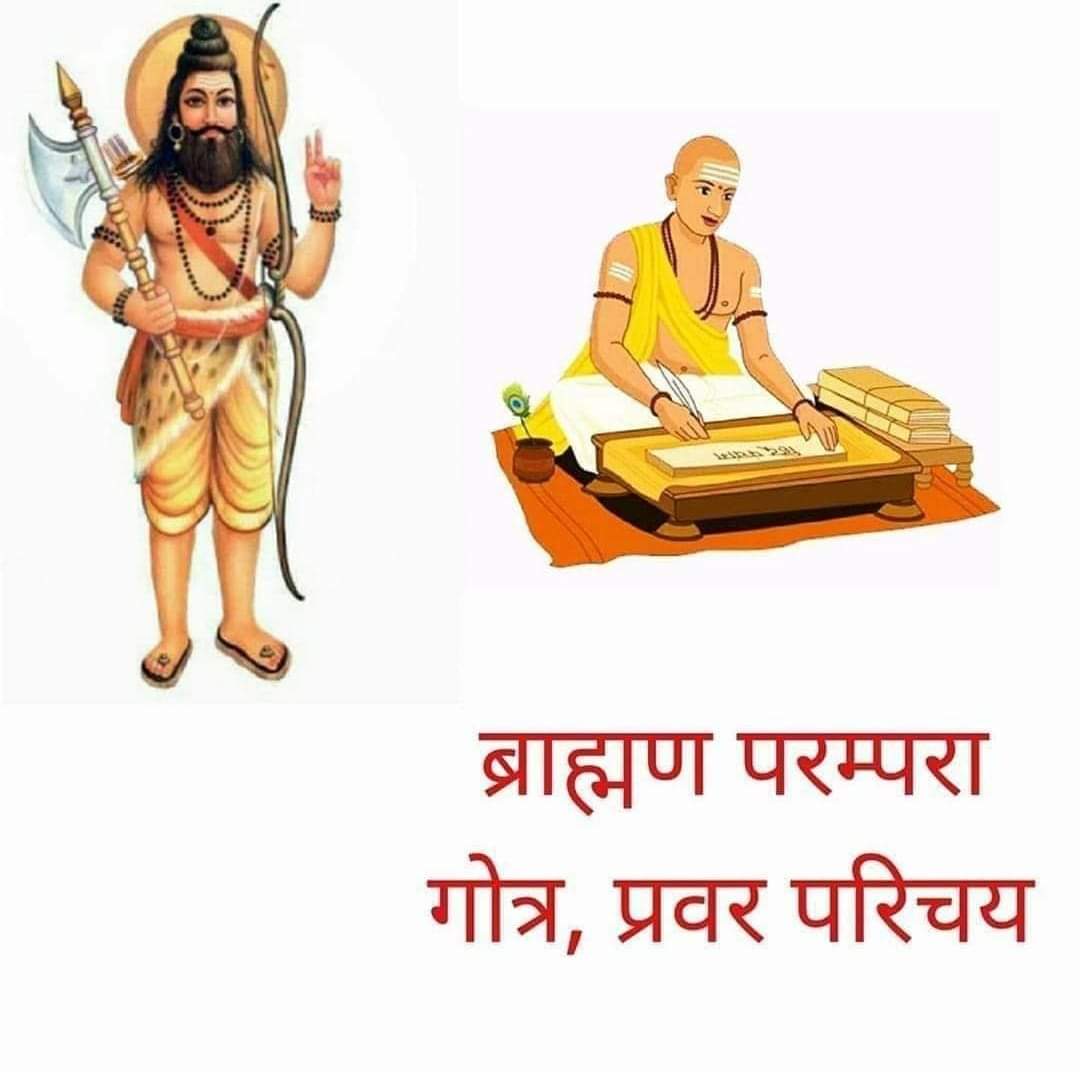
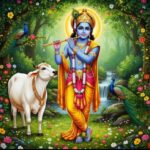
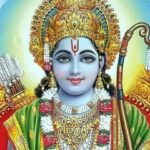
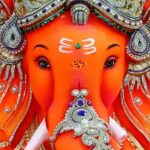

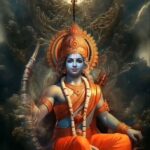
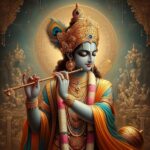


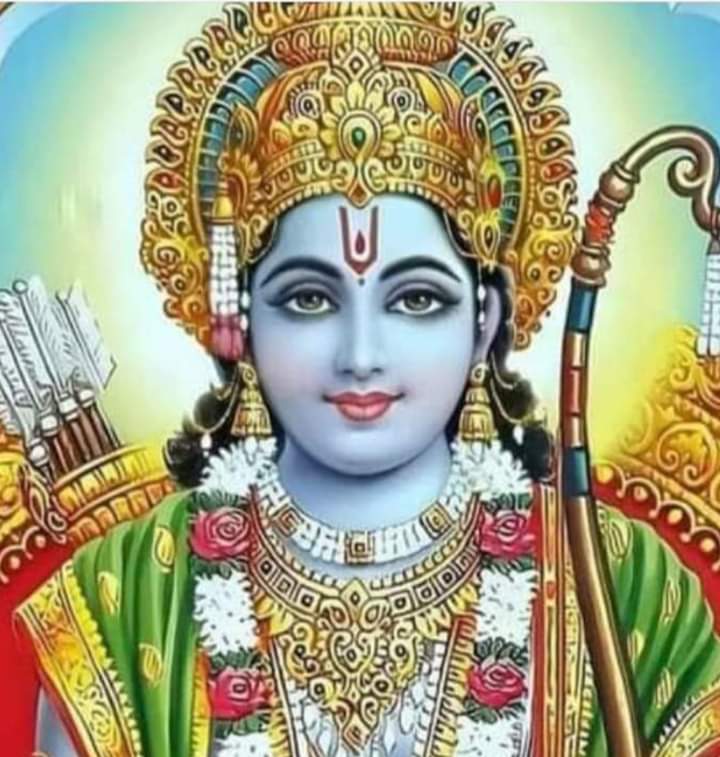
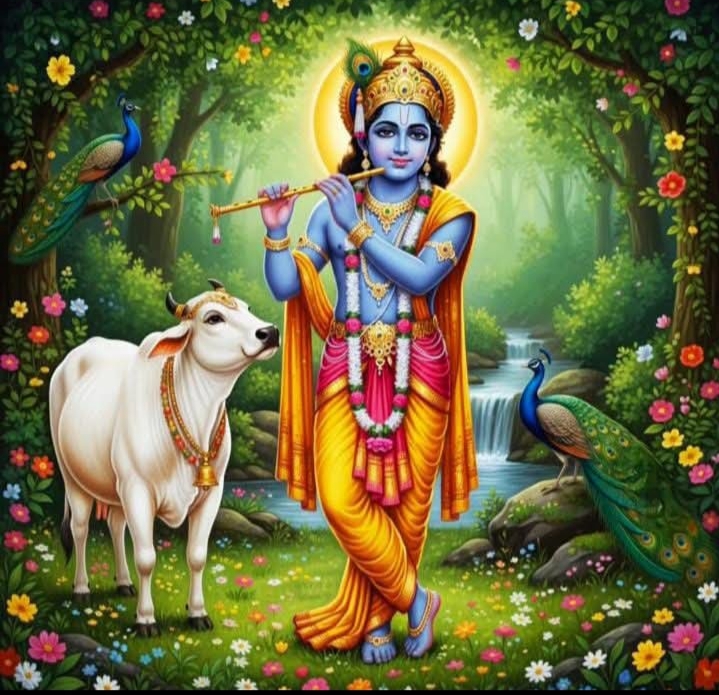
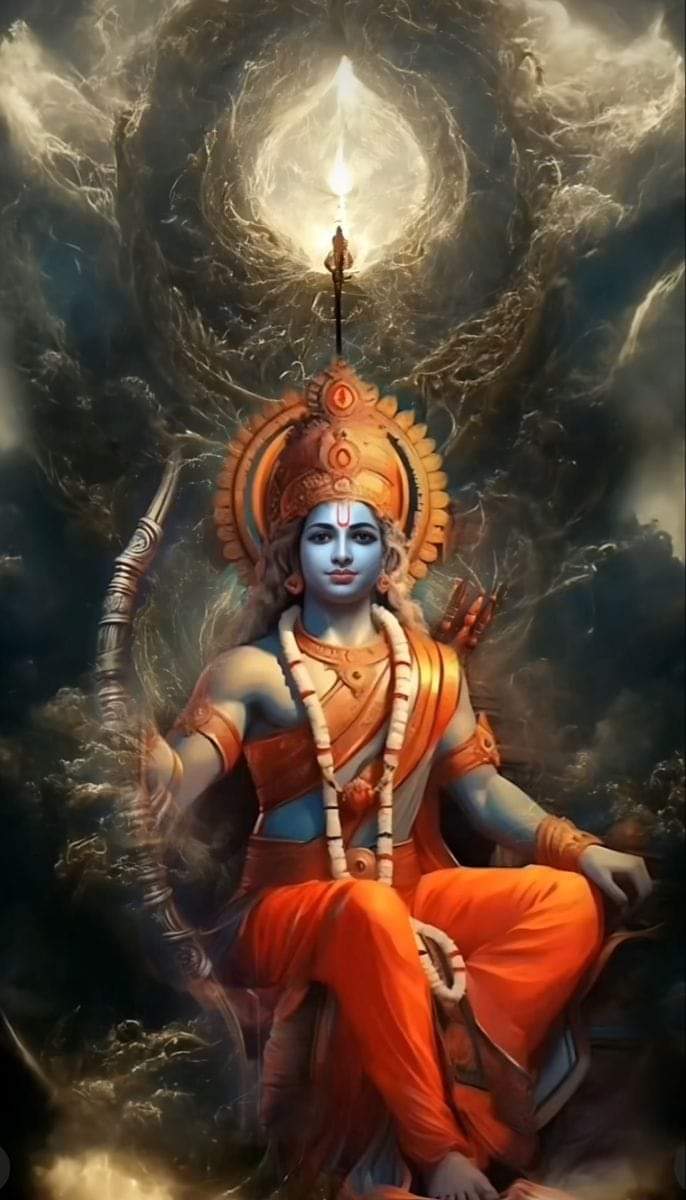

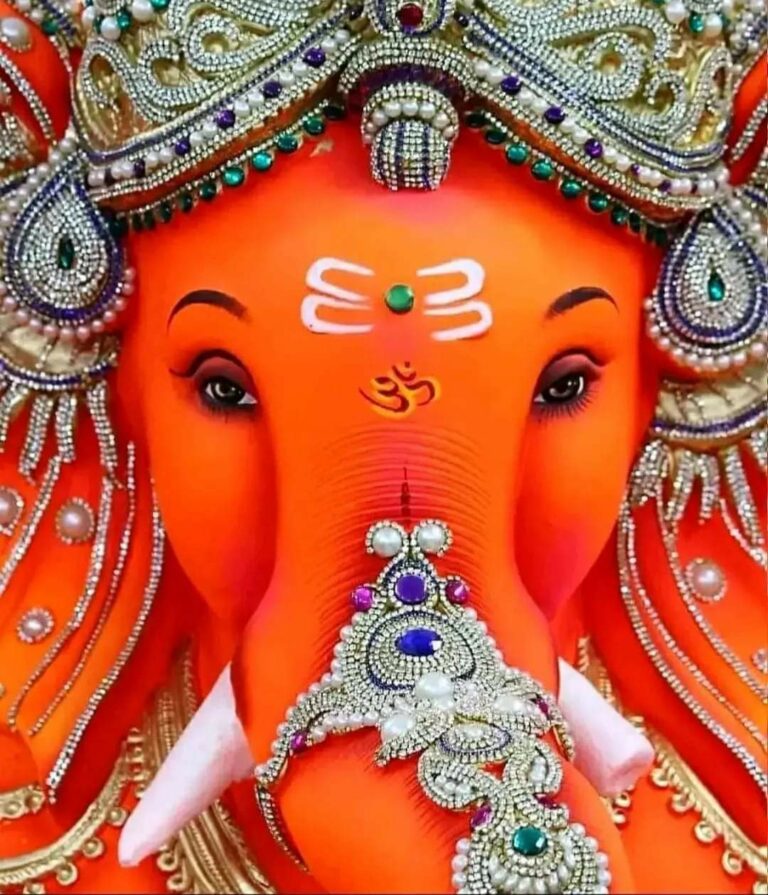

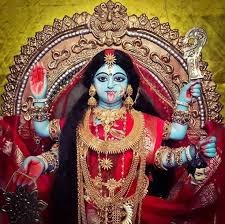
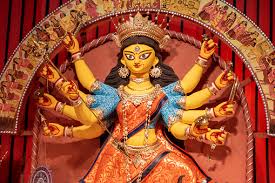
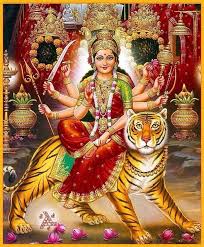
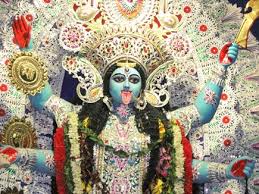
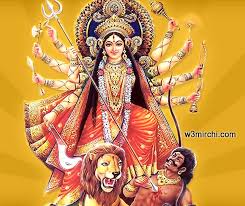
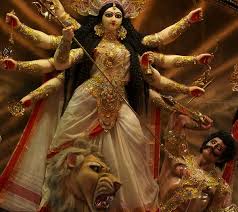
2 Responses
वार्धश्र्व गोत्र के बरे मे कूछ जनकारी नाही है, कृपया हो तो बताईये.
यह ब्राह्मणों की सरलता के लिए अच्छा कार्य किया है हम संग्रहकर्ता की भूरी भूरी प्रसंसा करते हैं ।